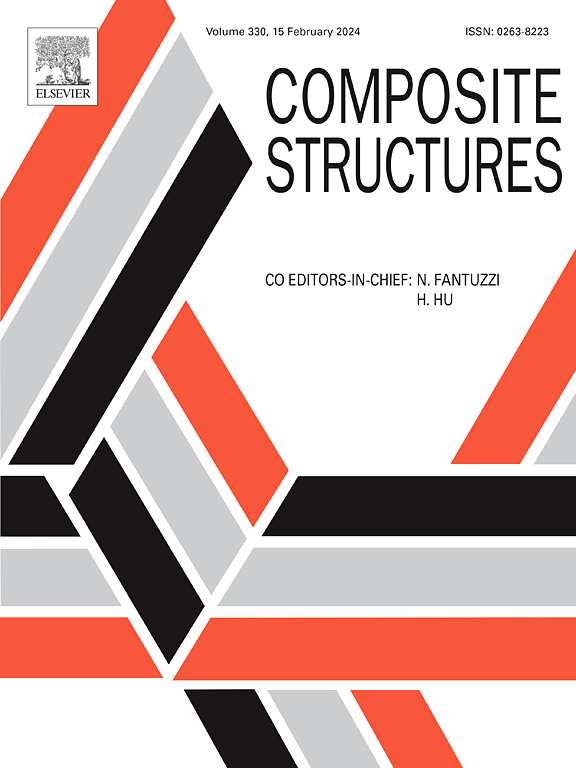增强抗冲击性能的仿生聚丙烯-碳复合三维编织复合材料
IF 6.3
2区 材料科学
Q1 MATERIALS SCIENCE, COMPOSITES
引用次数: 0
摘要
本研究开发了一种碳纤维-聚丙烯三维机织复合材料。仿生学的“砖瓦”设计是通过将柔软的聚丙烯纱线与脆性碳纤维交织在一起来实现的。这种新型复合材料与具有相同编织结构的标准碳纤维3D编织复合材料进行了基准测试,测试了拉伸性能、抗冲击性和剪切强度。显微照片和μCT扫描支持对比分析。结果表明,复合材料在纬向吸收的冲击能量比纯碳复合材料多16%。聚丙烯纱的存在增加了织物内部的卷曲,从而降低了拉伸和剪切性能。该研究确定了聚丙烯纱线的体积系数对于减少混杂设计中的卷曲和结构缺陷至关重要。总之,这项工作提出了一种受自然启发的混合复合材料,具有更高的抗冲击性,但在拉伸和剪切性能方面进行了权衡。本文章由计算机程序翻译,如有差异,请以英文原文为准。

Biomimetic polypropylene-carbon intra-ply hybrid 3D woven composite with enhanced impact resistance
In this study, a nacre-inspired carbon-polypropylene 3D woven composite is developed. The biomimetic ‘brick-and-mortar’ design is implemented by interlacing softer polypropylene yarns with brittle carbon fibres. This novel composite was benchmarked against a standard carbon fibre 3D woven composite with identical weave architecture, examining tensile properties, impact resistance, and shear strength. The comparative analysis was supported by micrographs and CT scans. Results showed that the hybrid composite absorbed 16% more impact energy in the weft direction than its purely carbon counterpart. The presence of polypropylene yarns increased crimp within the weave contributing to reduced tensile and shear properties. The study identifies the bulk factor of polypropylene yarns as critical in minimising crimp and structural flaws in the hybrid design. In summary, this work presents a nature-inspired hybrid composite, with an increased impact resistance but with trade-offs in tensile and shear properties.
求助全文
通过发布文献求助,成功后即可免费获取论文全文。
去求助
来源期刊

Composite Structures
工程技术-材料科学:复合
CiteScore
12.00
自引率
12.70%
发文量
1246
审稿时长
78 days
期刊介绍:
The past few decades have seen outstanding advances in the use of composite materials in structural applications. There can be little doubt that, within engineering circles, composites have revolutionised traditional design concepts and made possible an unparalleled range of new and exciting possibilities as viable materials for construction. Composite Structures, an International Journal, disseminates knowledge between users, manufacturers, designers and researchers involved in structures or structural components manufactured using composite materials.
The journal publishes papers which contribute to knowledge in the use of composite materials in engineering structures. Papers deal with design, research and development studies, experimental investigations, theoretical analysis and fabrication techniques relevant to the application of composites in load-bearing components for assemblies, ranging from individual components such as plates and shells to complete composite structures.
 求助内容:
求助内容: 应助结果提醒方式:
应助结果提醒方式:


